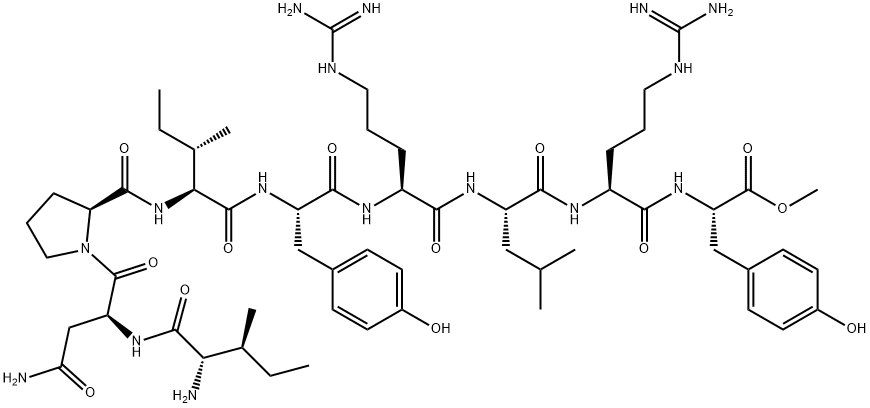Biological Activity
ki: 25.7 nm for y1neuropeptide y (npy), a 36-residue peptide amide isolated originally from porcine brain, is a member of homologous hormone family including peptide yy (pyy) and pancreatic polypeptide (pp). it is the most abundant peptide in the mammalian brain and has been shown to exhibit a wide spectrum of central and peripheral activities. these actions are mediated by at least six g-protein coupled receptor subtypes denoted as y1, y2, y3, y4, y5, and y6. bvd 10 is a highly selective and potent neuropeptide y (npy) y1 receptor antagonists.
in vitro
the inability to form such hydrogen bonding in bvd 10 may prevent or perturb the c-terminus reverse turn, which may contribute, at least in part, to the increased y1 selectivity [1]. moreover, bvd 10 and its npy analogue peptide bvd15 were characterized conformationally. the two peptides exhibit different secondary structure characteristics in trifluoroethanol. molecular modeling studies suggested that the c-terminus tyr9 is oriented in different directions in the two peptides. the difference in the structures observed may contribute to the y1 selectivity of bvd 10 relative to bvd 15 [2].
References
[1] balasubramaniam a, dhawan vc, mullins de, chance wt, sheriff s, guzzi m, prabhakaran m, parker em. highly selective and potent neuropeptide y (npy) y1 receptor antagonists based on [pro(30), tyr(32), leu(34)]npy(28-36)-nh2 (bw1911u90). j med chem. 2001 may 10;44(10):1479-82.
[2] jois sd, balasubramaniam a. conformation of neuropeptide y receptor antagonists: structural implications in receptor selectivity. peptides. 2003 jul;24(7):1035-43.
